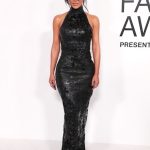“What makes sense for a New Yorker?” Peter Do recently pondered aloud. Do, one of New York City’s most respected rising designers, mulled the question from inside Helmut Lang’s Manhattan headquarters a few days before he would make his debut as the brand’s buzzy new creative director. “The pants shouldn’t be too long, right? Since you’re walking around. The boots have to be stomping boots. Things have to be comfortable, things have to be versatile, adjustable, and adaptable.”
The energy inside the studio seemed abnormally calm that day, despite the big September 8 show looming on the calendar. The designer—who has been called elusive, mysterious, and a prodigy—told me he knew his foray into helming the brand carried weight in the world of New York Fashion Week. Under his namesake line, Do has been praised for his high-concept basics that defy gender or age, and speak to fashion’s well-heeled minimalist elites. Helmut Lang, the storied designer who left an indelible mark of his own on New York style, was also known for his wearable, minimalist work—but with a highly intellectual and art-driven bent.
Despite the high praise he’s received from the upper echelons of the industry, Do is catering his Helmut Lang vision to the masses—and more specifically, to New Yorkers. “I really want to create a new system of dressing so that anyone can go to the store and be able to grab a nice suit that doesn’t break the bank, or a pair of jeans that can last you,” Do said, admitting that the pricing for the line will be significantly more affordable than what we’ve seen from his own label. “I feel like when people talk about Helmut, they talk about the pieces of clothing that they own from him, from the brand, and how much those items carried them through. There’s always a story behind the clothing.”
On show day, Do unveiled his Helmut Lang spring 2024 collection on the Lower East Side; the theme screamed New York, with decor calling to the city’s emblematic yellow taxis, which were translated, manipulated, and abstracted onto clothing through silk-screen techniques. There were archetypal all-black looks that exemplified New York City style, but there were also flashes of color that glorified everyday staples like jeans and trousers. The blazer—a house hero—was decorated with harness-like straps in black and fuchsia (a nod to Lang’s original palette) which alluded to the seatbelt strap of the taxi cab itself. Sheer cashmere sweaters in high-tech fabrics dominated the collection. There was plenty of suiting and denim that had been silkscreened with abstract taxi cab imagery, plus button-down shirts worn backward and printed with poetic language about the experience of being queer and Asian in America from the author Ocean Vuong. If it all looked a bit commercial, that was intentional. “Good design doesn’t alienate you,” Do said. “I’m showing you different ways to wear something.”
Do has mastered modern minimalism, but his roots also run deep in storytelling. The car and an overall transient state served as a focal point for the collection. The classic New York City subway announcement “stand clear of the closing doors,” played over the speakers and the final walk saw models scatter throughout the venue, walking briskly as if on a morning commute. “When I started thinking about what I wanted to do for the house, I was thinking about when I first moved to Philadelphia at 14. One of the first luxurious experiences that I had was being in a car,” Do said. “Coming from a farm in Vietnam, there were no cars. I thought, what a beautiful way to think about something that’s very functional and taken for granted.” (Cars were also spotted in the prints of taxicabs topped with Helmut Lang ads that Do used throughout the lineup.)
Wearability has been the topic du jour at many fashion shows for the past couple of seasons—and Do is certainly embracing the idea. “I want to make clothing that people can wear,” he said firmly. I do think there’s an overlapping customer that would wear both my brand and Helmut Lang, but I definitely want to feel more sensitive about my own brand. I want it to feel even smaller and more intentional. Whereas at Helmut, I really want to open the conversations to a bigger group of people.”
At a time when New York’s fashion scene is embracing new voices and experimental designs, it can sometimes feel like there’s a noticeable lack of consistency, direction, and purpose. But that’s part of what makes this city so beautiful. For Do, the idea of keeping things approachable feels oddly refreshing. “I just want to make clothes,” he said. “I always like the idea of having something in your wardrobe that would last you a lifetime, passed down through generations.”



